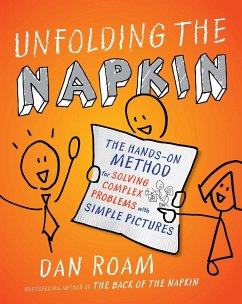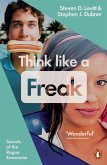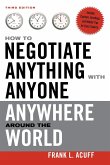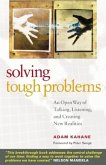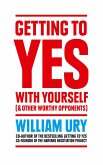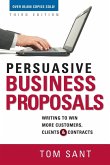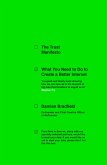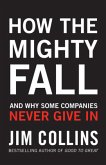An original workbook companion to the acclaimed business bestseller The Back of the Napkin
Dan Roam's The Back of the Napkin, a BusinessWeek bestseller, taught readers the power of brainstorming and communicating with pictures. It presented a new and exciting way to solve all kinds of problems-from the boardroom to the sales floor to the cubicle jungle.
The companion workbook, Unfolding the Napkin, helps readers put Roam's principles into practice with step-by-step guidelines. It's filled with detailed case studies, guided do-it-yourself exercises, and plenty of blank space for drawing. Roam structured the book as a complete four-day visual-thinking seminar, taking readers step-by-step from "I can't draw" to "Here is the picture I drew that I think will save the world."
The workbook teaches readers how to:
Improve their three "built-in" visual problem solving tools.
Apply the four-step visual thinking process (look-see-imagine-show) in any business situation.
Instantly improve their visual imaginations.
Learn how to recognize the type of problem to choose the best visual solution.
If The Back of the Napkin was a guide to fine dining, Unfolding the Napkin is the cookbook that will soon be heavily marked up and dogeared.
Hinweis: Dieser Artikel kann nur an eine deutsche Lieferadresse ausgeliefert werden.
Dan Roam's The Back of the Napkin, a BusinessWeek bestseller, taught readers the power of brainstorming and communicating with pictures. It presented a new and exciting way to solve all kinds of problems-from the boardroom to the sales floor to the cubicle jungle.
The companion workbook, Unfolding the Napkin, helps readers put Roam's principles into practice with step-by-step guidelines. It's filled with detailed case studies, guided do-it-yourself exercises, and plenty of blank space for drawing. Roam structured the book as a complete four-day visual-thinking seminar, taking readers step-by-step from "I can't draw" to "Here is the picture I drew that I think will save the world."
The workbook teaches readers how to:
Improve their three "built-in" visual problem solving tools.
Apply the four-step visual thinking process (look-see-imagine-show) in any business situation.
Instantly improve their visual imaginations.
Learn how to recognize the type of problem to choose the best visual solution.
If The Back of the Napkin was a guide to fine dining, Unfolding the Napkin is the cookbook that will soon be heavily marked up and dogeared.
Hinweis: Dieser Artikel kann nur an eine deutsche Lieferadresse ausgeliefert werden.
"In 2008, Roam's The Back of the Napkin soaked up some book-of-the-year love from The Financial Times, Businessweek and Amazon.com. Roam's point was that problems can be better solved by drawing simple pictures, regardless of artistic ability. It's easier to see solutions visually, and it's also the revealing process of physically diagramming a problem, the argument goes.
To discover truly breakthrough ideas, intuitively develop those ideas and share those ideas effectively with others, we need pictures," Roam writes.
Since then, the management consultant and his Sharpies have conducted workshops at an impressive list of organizations, including Boeing, Pfizer, Google, Microsoft, Wal-mart and the U.S. Senate. Now, with Unfolding the Napkin, Roam squeezed his four-day workshop into a workbook so everyone can follow along.
It's a simple concept, but when Roam arrives at a solution for last year's economic crisis by drawing intersecting circles representing financial services, the auto industry and declining energy supplies, it's clear that Napkin is nothing to sneeze on.
-USA Today, Jan. 4, 2010
Whoever draws the best picture of a problem is the most likely to solve it.
Dan Roam offers a simple explanation about how to draw a problem/solution picture.
Draw a circle in the upper left corner of a sheet of paper and label it me. Draw a cloud-shaped circle in the lower left; label it my problem. Draw the shape of a closed Swiss army knife on the center of the page. Add and label "blades" (what you see, what to look for, what if..., how, when, where, why, how much, etc.) that deal with me and my problem. Those blades help you think of others that will help identify the problem, alternatives and solution.
What Roam drew on one page took me 90 words to describe, by the way.
-The Dallas Morning News, Dec. 26, 2009
To discover truly breakthrough ideas, intuitively develop those ideas and share those ideas effectively with others, we need pictures," Roam writes.
Since then, the management consultant and his Sharpies have conducted workshops at an impressive list of organizations, including Boeing, Pfizer, Google, Microsoft, Wal-mart and the U.S. Senate. Now, with Unfolding the Napkin, Roam squeezed his four-day workshop into a workbook so everyone can follow along.
It's a simple concept, but when Roam arrives at a solution for last year's economic crisis by drawing intersecting circles representing financial services, the auto industry and declining energy supplies, it's clear that Napkin is nothing to sneeze on.
-USA Today, Jan. 4, 2010
Whoever draws the best picture of a problem is the most likely to solve it.
Dan Roam offers a simple explanation about how to draw a problem/solution picture.
Draw a circle in the upper left corner of a sheet of paper and label it me. Draw a cloud-shaped circle in the lower left; label it my problem. Draw the shape of a closed Swiss army knife on the center of the page. Add and label "blades" (what you see, what to look for, what if..., how, when, where, why, how much, etc.) that deal with me and my problem. Those blades help you think of others that will help identify the problem, alternatives and solution.
What Roam drew on one page took me 90 words to describe, by the way.
-The Dallas Morning News, Dec. 26, 2009

